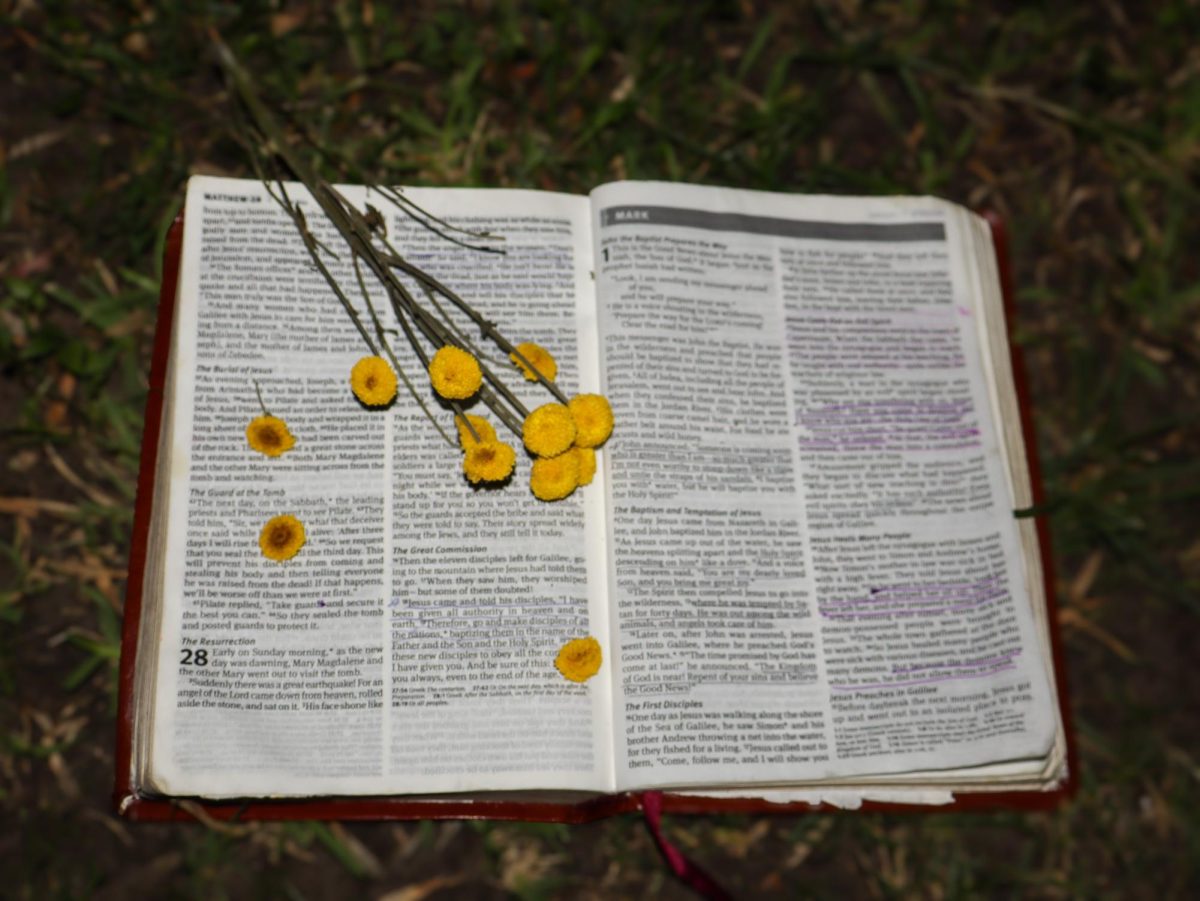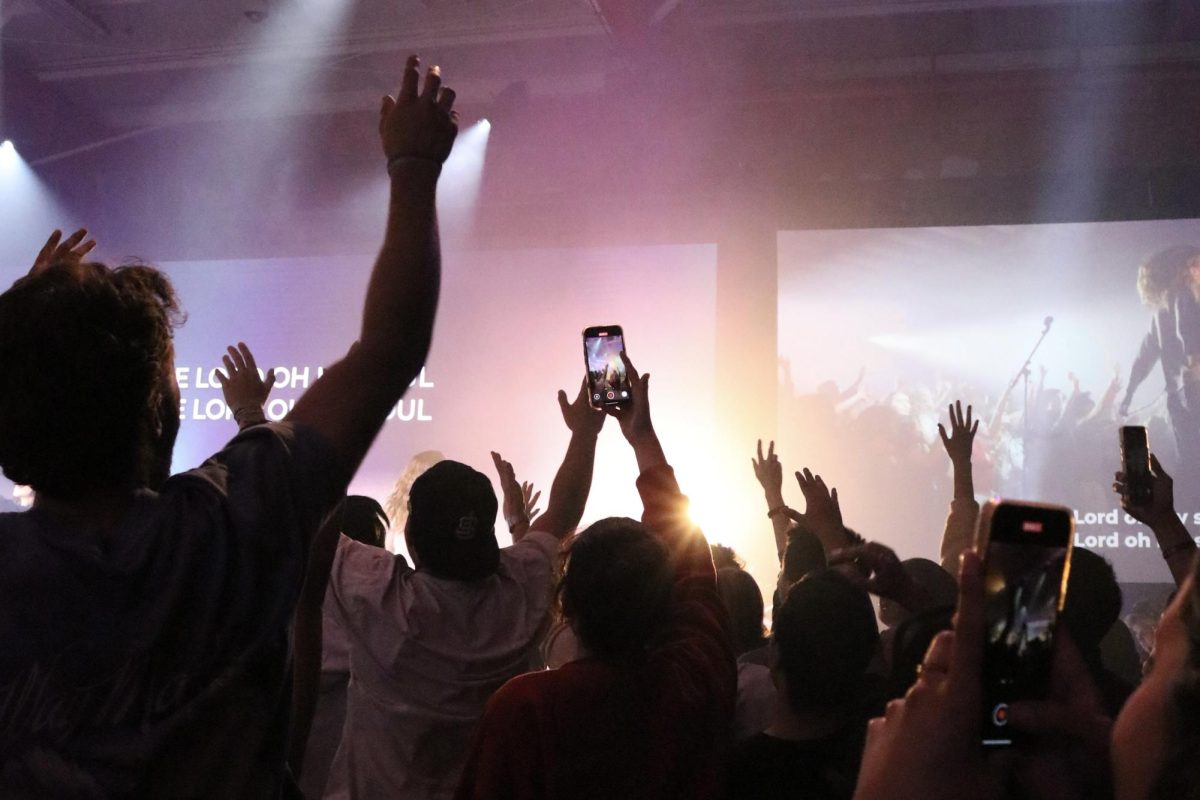Some of you new students may have noticed when you arrived on “move-in” day that a few protesters were on the street with anti-abortion signs and again on the first day of classes. And you may have thought, “That’s strange. I thought Biola believed in the sanctity of life.” We do. It was strange.
Despite our best efforts to explain our position to this one group, they insisted on sending protesters to our campus believing we’re not serious enough about the protection of innocent life. We graciously extended hospitality and treated them as our guests, providing them with cool drinks, lunch, chairs and umbrellas to fend off the heat. They were as kind to us as we were to them. But for three days this handful of sign-holders stood at the entrance to our campus. They have said they’ll keep coming back.
I would like to share with you the bigger picture of this situation. Those of you returning from last year may recall that in May we had a moment on campus when a Biola student in good standing was asked to remove graphic depictions of aborted babies. Part of the encounter was captured on video that was then selectively edited and posted on YouTube. Since then, I have heard from many friends of Biola who are leaders and voices in the pro-life community asking for perspective on the video and offering help, knowing we are allies for the sanctity of human life.
To them, as well as to anyone of interest, I want to acknowledge that some missteps were made in our response to this situation. For this we apologized publicly as I have privately apologized to the student. In the days and weeks following this incident, we have thought about where and how we could have done things differently. In turn, we have taken corrective steps. Her passion to save the unborn was not the reason she was asked to remove the photographs.
Allow me to reinforce Biola’s position on the sanctity of human life, as this is a deeply held and biblically grounded conviction of this university. The Bible is clear in its teaching on the sanctity of life. Life begins at conception. We abhor the destruction of innocent human life through abortion on demand as unbiblical and contrary to God’s will. Life is precious and in God’s hands. All of our faculty and trustees affirm this conviction. It is so important to us that it is one of our theological distinctives.
We have had this year — and will have in years to come — pro-life events and speakers on campus. We have a pro-life group led by students. We are one of a handful of American colleges and universities filing suit against the Federal Government for mandating contraceptive coverage in our health plan to include drugs like the morning-after pill and the week-after pill. Simply, we are allies with the pro-life community on behalf of the unborn. Why then would these protesters come to Biola? Good question.
The issue central to the situation with protesters had to do with the use of graphic images displayed in high-traffic areas on campus. Since then, we have begun an important conversation on how a biblically faithful university, like Biola, discusses the where, when and why in displaying images representing the victims of injustice. We realize that images have the power to change hearts and minds. This was true of exposing the Holocaust as well mobilizing support for malnourished children, among many other examples through modern history. Just last week on the front page of The New York Times were photos of dead children, even an infant, who were the victims of the Syrian chemical attacks. Those images were startling and caused me to understand even more emotionally the horrors of this civil war.
What should be the response of a robustly Christian university to displaying graphic images of victims of injustice? I ask this question thinking of many examples: starving children, videos of domestic abuse, torture victims, aborted fetuses, child pornography, children being molested, soldiers raping sex-trafficked teenaged girls and so on.
As we’ve pondered these issues, we want to make sure any graphic images are displayed thoughtfully, ethically and effectively. And so, we will consider issues such as the need for appropriate notice to the community, the availability of counselors, the explicit nature of the photos themselves and the places visitors and families frequent our campus. Because we are a college that attracts many guests and visiting families, we want to respect the right of parents to choose when and how they discuss the horrors of abortion with their children.
It is within Biola’s core mission to raise up graduates equipped with moral courage and intellectual competence who can impact the larger culture. Biola encourages all students to follow Christ wholeheartedly, to speak up boldly for those who cannot speak for themselves and to serve with conviction and courage. We don’t want to silence students who in truth and with grace speak up for victims of injustice.
That said, we need to and will have a policy supporting the ethical and compassionate use of graphic images of any injustices and how these should be placed in areas trafficked by students. The Office of Student Development will be leading this process to have a policy in place by the end of this semester. We need to be committed to finding ways and appointing times and places on campus where information, including photographs of victims of injustice, can be displayed. We also respect the rights of those who do not wish to look at such photos, so we will be sure to consider the venue and to post appropriate notices concerning displays that are disturbing.
This summer we have made other commitments regarding using visuals in a pro-life chapel this academic year. Also, through our normal processes, we are assessing our courses to ensure we truly advocate for victims of injustice in general and the rights of the unborn in particular.
We are a university that needs to grapple thoughtfully on issues of importance. This is when we are at our best. As we consider this policy, we will carefully think through specific questions and issues to make this a learning experience for the entire community. Some of these questions may include:
1. What should be done to help individuals who have had abortions and now realize the full extent of their actions? While godly sorrow may be appropriate, how can we also assure those who have had abortions of the full extent of God's forgiveness and mercy? As Paul admonishes us in Romans 12:15, we are to “weep with those who weep.”
2. While the showing of graphic images may be useful in conveying the horrors of abortion, at what point might images be deemed too graphic or distasteful?
3. Where is the ethical good between using photos of aborted fetuses to show the horror of abortion, and understanding these images depict precious girls and boys who have a soul and dignity and are made in the image of God?
4. Because photos are so powerful and their impact long lasting, how do we make sure their display happens in a way that is carefully facilitated? What type of training is necessary for individuals who will be present to comfort and counsel those who witness disturbing images?
As it relates to random or unapproved graphic images on campus, we will continue our practice of having the place and content approved by Student Development. I take seriously the reflections of a woman from Ohio, responding to my open letter, writing, “[We] want to be there for the people who are post-abortive, desiring they find healing, but knowing they likely will be fearful to seek help because of their perceived fear of wrath from those whom they look up to and strive to please. This latter group can often be moved by graphic pictures, but most likely will not. They will most likely be driven deeper into their shame, into their depression and quite possibly away from their Savior. That, of course, is never our objective, but it's still a real possibility when we hold signs with graphic images.”
I hope and pray that reasoned minds will prevail through our conversations and the result will be a framework to allow students to speak their convictions and do so in a way that will not result in more situations like this student faced in May. We will also continue and advance our advocacy for life and in support of the unborn through our chapels, our student groups, our theological distinctives, in our classrooms and curriculum and, as we have, through legal action. We have begun to consider additional ways to emphasize the tragedy and trauma of abortion so that our students not only embrace the convictions like this student championed but also understand there's help for them in times when they need it.
You can find my commitments in an open public apology letter I sent in August here.







